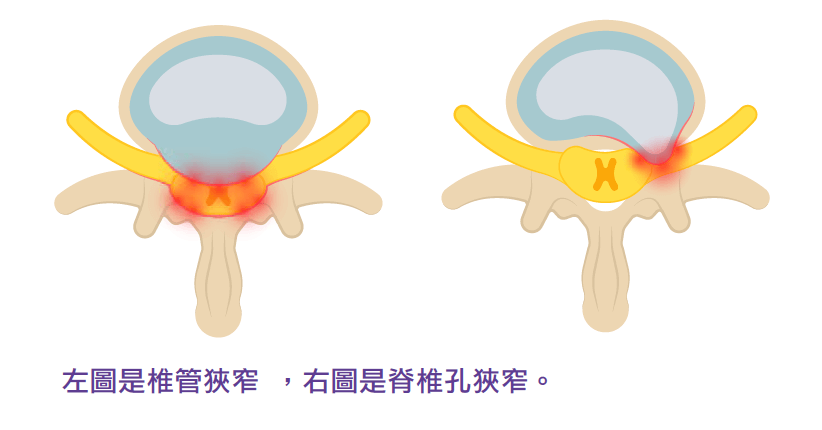Foraminal stenosis, many people may not even know where is the spinal nerve foramen. In fact, the central nerve find in the spinal canal and then branch out to the left and right at the spinal nerve foramen, for example, the nerve coming out from the left and right side of the cervical spine extend to the hands, and the nerve coming to the left and right sides of the lumbar spine extend to the feet. What are the symptoms caused by spinal foramen stenosis?
What is spinal foramen stenosis?
I am often asked by patients with MRI reports, what does the spinal foramen stenosis shown in the report mean? It can be seen that this condition is very unfamiliar to everyone. There are two spinal foramen between vertebrae, and nerves are branch out in this space. Some patients have a herniated disc and extensive bone spurs, resulting in narrowing of the spinal foramen and pressing on the nerves root. Fortunately, these bone spurs do not affect the central nerve or cauda equina in the spinal canal, so patients with spinal foramen stenosis usually do not have incontinence. What is the difference between spinal foramen stenosis and spinal stenosis? Under normal conditions, the space of the spinal canal is very wide and large, with joint degenerative or there is a more obvious intervertebral disc herniation, the space of the spinal canal becomes smaller and smaller, and in the case that the central nerve root cannot pass thru, it will compress the central nerve and produce more serious cases, such as the patient may suddenly fall with foot weakness, or incontinence. If these conditions are more severe, the patient may need surgery to improve symptoms.

As for conservative treatment, it is mainly to deal with the patient pain first, and Cox decompression treatment of the spine can be used to decompress the nerve. In addition to relieving nerve pressure with conservative treatment, it can also help recovery through exercise. Here are a few exercises for the reader.
Three exercises to relieve spinal foramen stenosis
First exercise
Lie on a cushion, choose a sturdy chair without rollers, rest your calves flat on the chair, knees at 90 degrees, and your lower back completely relaxed and lying on the floor mat, maintain this position without doing anything, just continue to relax. This action can immediately relieve low back pain and low back fatigue, just completely relax to let the weight of the body sink, the feet are also completely relaxed, continue to lie flat to relieve the discomfort of the lower back.
Second exercise
After completing the first exercise, maintain the same posture for dynamic relief. First pull your knees to your chest, if you feel knee pain, you can put your hands behind your thighs, this movement focuses on relaxing the lower back, not pulling your thighs close to your chest, you must feel that your lower back is really relaxed to be effective. After switching from one foot to the other, also relax the lower back position, and stay on the left and right feet for 8 to 10 seconds.
The third exercise
The last exercise is also performed with the chair. If the left side hurts, put your left foot on the chair, wrap your hands around the sides of your calves, and then bend down to bring your chest closer to your thighs. The back is bent during action, try to pull the tail bone down when lifting the foot, maintain the movement and stay for four to six inhalations and exhalations, and the feeling of the lower back will be stronger when exercising. Relax your hands as you inhale and pull your tail bone down as you exhale. Remember that the entire upper body must be bent down close to the thigh to open the intervertebral foramen in the middle of the spine, and if the lower back is straight, the intervertebral foramen cannot be opened. If both feet are sore, you can rotate between left and right feet.
The spinal foramen will be degenerated by years of degeneration or strain, causing ligaments to degenerate and bone spurs, and when the intervertebral disc is worn, it will also lead to intervertebral disc herniation, pressing the nerve next to the spinal foramen and causing inflammation and swelling, resulting in pain or weakness. Seek medical help when you continue feeling the pain.

 Book an Appointment
Book an Appointment


